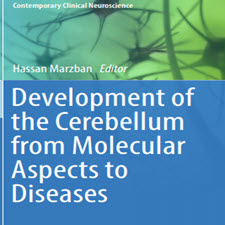Pathogenesis of Periodontal Diseases
ABSTRACT
Periodontal disease, or periodontitis, is a globally widespread pathology of the human oral cavity. Indeed, approximately 10% of the global adult population is highly vulnerable to severe periodontitis. Another 10–15% appears to be completely resistant to it, while the remainder vary between these two extremes . Moreover, the prevalence of periodontitis is peaking at the fourth decade of life and increasing to 70–85% in the age group of 60–65 . Strikingly, despite major improvements in oral hygiene practices today, these proportions are not far from what was reported in possibly the frst epidemiological report of periodontitis in humans back in 1918 (then defned as periodontoclasia or pyorrhea alveolaris). According to that, the prevalence of the disease in the Chicago area was 13% in the age range of 20–24, 68% in 30–39, and 88% over 50. Much recent data from USA showed that there is not a drop but rather an increase in these numbers among the older individuals . That means that periodontitis is an inevitable oral pathology of the human population, and its prevalence increases with age. Taking also underconsideration the increasing life expectancy, periodontitis is a growing health problem. Despite the persistence of severe periodontitis even in the twenty-frst century, the last 100 years have witnessed a signifcant progress in our understanding of its pathogenesis, that is, the conglomerate of biological processes that lead to the disease. Nevertheless, the actual “coordinator(s) ”of the disease is still an issue of intense debate. Microbiology researchers place emphasis in seeking species, or combinations of them, associated with different clinical forms of the disease. On the other side, immunologists are in pursuit of cells and molecules that orchestrate the tissue-destructive inflammation, as a result of the bacterial challenge.
INTRODUCTION
The human interest in defning and understanding periodontal disease spans over the centuries, and many paradigm shifts occurred concerning its epidemiology and pathogenesis. Pioneers in the feld have left us with a heritage of historical knowledge that has been transforming over the years. Their views and contributions were direct reflection of the knowledge that was available at the time and an important testament for the generations to come. Although it won’t be possible to single out all great contributors, we will try to summarize some hallmarks in chronological order.
چکیده
بیماری پریودنتال یا پریودنتیت یک آسیب شناسی گسترده در سراسر جهان از حفره دهان انسان است. در واقع، حدود 10٪ از جمعیت بزرگسال جهان به شدت آسیب پذیر به پریودنتیت شدید است. دیگر 10-15٪ به نظر می رسد کاملا به آن مقاوم است، در حالی که باقی مانده بین این دو افراطی متفاوت است. علاوه بر این، شیوع پریودنتیت در دهه چهارم زندگی در حال افزایش است و در گروه سنی 65-60 سال به 70-85٪ افزایش می یابد. به طور قابل ملاحظه ای، علیرغم پیشرفت های عمده در شیوه های بهداشت دهان امروز، این نسبت ها از مواردی است که احتمالا در گزارش اپیدمیولوژیک پر از بیماری در انسان ها در سال 1918 گزارش شده است (پس از آن به عنوان دوره پریتوکتازیلا یا پیورا آلوئولاریس تعریف شده). بر اساس این گزارش، شیوع این بیماری در منطقه شیکاگو 13٪ در محدوده سنی 20 تا 24 سال، 68٪ در 30-39 سالگی و 88٪ در بیش از 50 سال است. اطلاعات اخیر آمریكایی نشان می دهد كه میزان كاهش وجود ندارد بلکه افزایش تعداد این افراد در میان افراد مسن تر است. این بدان معنی است که پریودنتیت آسیب شناسی اجتناب ناپذیری از جمعیت انسان است و شیوع آن با سن افزایش می یابد. با توجه به افزایش طول عمر امید به زندگی، پریودنتیت یک مشکل سلامتی رو به رشد است. علیرغم تداوم پریودنتیت شدید حتی در قرن بیست و یکم، 100 سال گذشته شاهد پیشرفت قابل توجهی در درک ما از پاتوژنز آن، یعنی کنگلومراسیون فرایندهای بیولوژیکی است که منجر به این بیماری می شود. با این وجود، “هماهنگ کننده” واقعی بیماری هنوز مسئله بحث شدیدی است. محققان میکروبیولوژی در جستجوی گونه ها یا ترکیبی از آنها، با انواع مختلف بالینی بیماری مواجه هستند. از سوی دیگر، ایمونولوژیست ها در پی یافتن سلول ها و مولکول ها هستند که در نتیجه چالش باکتریایی بافت مخرب به هم متصل می شوند.
مقدمه
علاقه انسان به حفاظت و درک فوائد پریودنتال طوالنی است و بسیاری از تغییرات پارادایم در مورد اپیدمیولوژی و پاتوژنز آن رخ داده است. پیشگامان این فلاور ما را با میراثی از دانش تاریخی که طی سالها در حال تغییر است، ترک کرده است. دیدگاه ها و مشارکت های آنها مستقیما از دانش موجود در آن زمان و مدارک مهمی برای نسل های آینده بود. هرچند ممکن است همه ی متخصصان بزرگ را نادیده بگیریم، ما سعی خواهیم کرد برخی از نشانه ها را در ترتیب زمانی به طور خلاصه خلاصه کنیم.
Year: 2016
Publisher : SPRINGER
By : Nagihan Bostanci, Georgios N. Belibasakis
File Information: English Language/ 113 Page / size: 2.79 MB
سال : 1395
ناشر : SPRINGER
کاری از : نقیان بوستانچی، جورجیوس نیل بی بیاساکیس
اطلاعات فایل : زبان انگلیسی / 113 صفحه / حجم : MB 2.79


![Pathogenesis.of.Periodontal.Diseases.Biological.[taliem.ir]](https://taliem.ir/wp-content/uploads/Pathogenesis.of_.Periodontal.Diseases.Biological.taliem.ir_.jpg)
![Diseases.of.the.Chest.and.Heart.2015–2018.[taliem.ir] Diseases.of.the.Chest.and.Heart.2015–2018.[taliem.ir]](https://taliem.ir/wp-content/uploads/Diseases.of_.the_.Chest_.and_.Heart_.2015–2018.taliem.ir_.jpg)
![Pediatric.Demyelinating.Diseases.[taliem.ir] Pediatric.Demyelinating.Diseases.[taliem.ir]](https://taliem.ir/wp-content/uploads/Pediatric.Demyelinating.Diseases.taliem.ir_.jpg)
![Vascular.Diseases.for.the.Non-Specialist.An.Evidence-Based.Guide.[taliem.ir] Vascular.Diseases.for.the.Non-Specialist.An.Evidence-Based.Guide.[taliem.ir]](https://taliem.ir/wp-content/uploads/Vascular.Diseases.for_.the_.Non-Specialist.An_.Evidence-Based.Guide_.taliem.ir_.jpg)
![Exosomes.in.Cardiovascular.Diseases.Biomarkers.[taliem.ir] Exosomes.in.Cardiovascular.Diseases.Biomarkers.[taliem.ir]](https://taliem.ir/wp-content/uploads/Exosomes.in_.Cardiovascular.Diseases.Biomarkers.taliem.ir_.jpg)
![Comorbidity.in.Rheumatic.Diseases.[taliem.ir] Comorbidity.in.Rheumatic.Diseases.[taliem.ir]](https://taliem.ir/wp-content/uploads/Comorbidity.in_.Rheumatic.Diseases.taliem.ir_.jpg)
![Depression and Anxiety[taliem.ir] Depression and Anxiety[taliem.ir]](https://taliem.ir/wp-content/uploads/Depression-and-Anxietytaliem.ir_.jpg)

![Clinical Management of[taliem.ir] Clinical Management of[taliem.ir]](https://taliem.ir/wp-content/uploads/Clinical-Management-oftaliem.ir_.jpg)

![Endocannabinoids.and.Lipid.Mediators.in.[taliem.ir]](https://taliem.ir/wp-content/uploads/Endocannabinoids.and_.Lipid_.Mediators.in_.taliem.ir_-150x150.jpg)
![Passing the Certifed[taliem.ir]](https://taliem.ir/wp-content/uploads/Passing-the-Certifedtaliem.ir_-150x150.jpg)
دیدگاه خود را ثبت کنید
تمایل دارید در گفتگو شرکت کنید؟نظری بدهید!